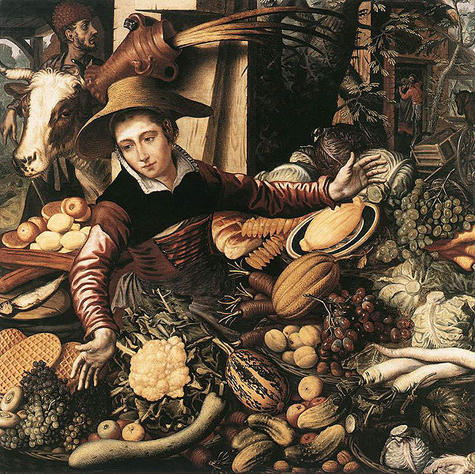Human Flower Project
Spotlight on the Small
Attending to lowly phenomena (like how lilies bloom), a Harvard mathematician earns the highest honor—to continue his research.

A mathematician who’s studied, among other “commonplaces,” the workings of the Venus fly trap, is among this year’s MacArthur fellows
Photo: FlushRush
Call him the Seinfeld of applied mathematics. Or how about the Vermeer of Harvard Square? Professor Lakshminarayanan Mahadevan, an exceptional scholar of the ordinary, studies why sheets wrinkle, how flags flutter, why honey coils and flowers open. Mahadevan has received one of this year’s “genius grants” from the MacArthur Foundation.
“I try to uncover explanations for everyday events that are easily seen but not well understood, “ Mahadevan says.
In this interview with Robert Siegel of NPR, the mathematician explains that with a half dozen store-bought lilies and time lapse photography, he and his team hunkered down to decipher an everyday wonder. Blooming. What did they learn?
“Each petal grows, but it grows along its edge more than it grows along its center,” Mahadevan explained. “As a consequence, the petals which are originally convex, closed, became concave and open and unfurl. And so, we made a mathematical theory for it.”
Here, two pink peonies do the convex to concave trick.
Each MacArthur fellow receives half a million dollars to spend as he or she pleases. The foundation stresses that its fellowship is “not a reward for past accomplishment, but rather an investment in a person’s originality, insight, and potential.” We’re happy that the grantors saw fit to encourage this world-class scholar of commonplace things.

Gemüseverkäuferin/Market Woman with Vegetable Stall
By Pieter Aertsen (1567)
Photo: Staatliche Museen, Berlin, via wiki
The questions that keep Professor Mahadevan busy call to mind the artistic inclination for “Rhopography” – “the depiction of those things which lack importance, the unassuming material base of life that ‘importance’ constantly overlooks.” We touched on this subject briefly, in a post about the anonymous painters of musical instruments. The spotlight on Professor Mahadevan and his committed research into the mechanics of the lowly returns us to this peculiar term.
Discussing 16th Century Dutch still life painter Pieter Aertsen (his genre scenes featuring bundles of sticks, discarded mussel shells, gourds and breadloaves) , Reindert L. Falkenburg could also be describing Mahadevan‘s studies of sheets and honey.
“The characteristics of still life as ‘low art’ (‘rhopography’) have a ‘longue duree,’ and an ‘almost geographical rhythm that is all their own.’” Another way of saying that they have “a mathematics”? You can read Falkenburg’s whole fascinating essay here.
 Lakshminarayanan Mahadevan, professor of applied mathematics, explains the working of a Venus fly trap
Lakshminarayanan Mahadevan, professor of applied mathematics, explains the working of a Venus fly trap
Photo: Kris Snibbe, Harvard News Office
“While ‘megalography’ paints the ‘legends of the gods, the battles of heroes, the crises of history,’ concentrating on the ‘centrality, value and prestige of the human subject’ and so on ‘narrative’, ‘discontinuity’ and ‘change,’ still life takes place at the level of the ‘continuous’ and ‘homeostatic,’ at the ‘level of routine existence’.” Dr. Mahadevan’s work—like Dutch still life painting—reveals that when seemingly ordinary things are observed with intensity, the semblances of “stasis” and “continuity” often break down— instead, movement and complexity come to light.
Mahadevan’s wonder seems to us anything but “routine.” Devoting a life to rippling, wrinkling, dripping, and blooming strikes us as completely extraordinary. “Folding is not just for flowers,” the mathematician reminds us, “but critical to our very existence. It happens in our tightly bound-up DNA.”
We love how the professor’s palms, imitating the mechanics of a Venus fly trap, are reminiscent of Pieter Aertsen’s vegetable seller. Here is a “rhopo-gesture” of openness and plenitude.


Description of “In Small Things Forgotten” by James Deetz:
“History is recorded in many ways. According to author James Deetz, the past can be seen most fully by studying the small things so often forgotten. Objects such as doorways, gravestones, musical instruments, and even shards of pottery fill in the cracks between large historical events and depict the intricacies of daily life” (http://www.powells.com/cgi-bin/biblio?inkey=1-9780385483995-1).